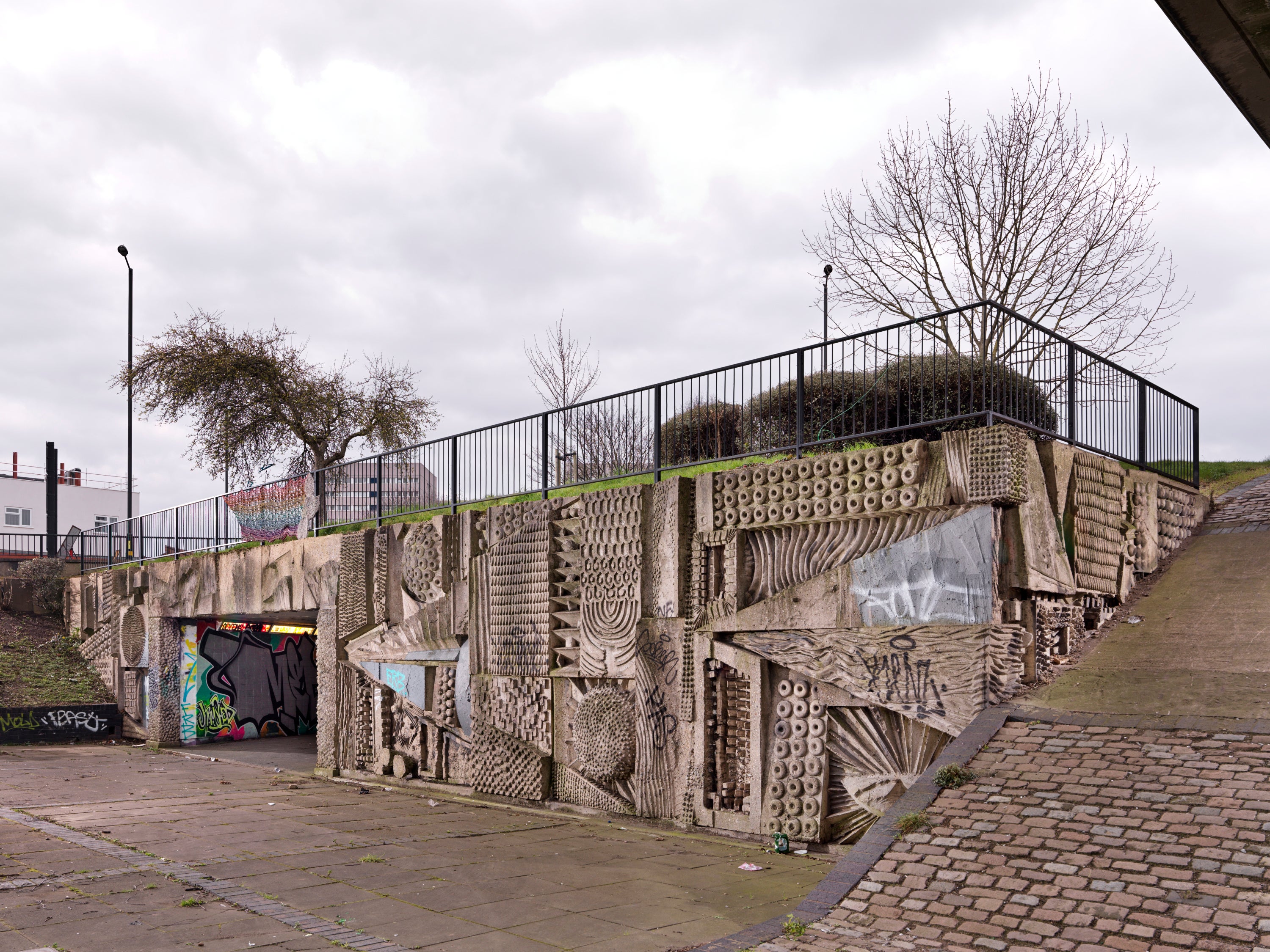Listed status for murals at city’s flyover underpass
The three banked mural walls in the pedestrian concourse of Birmingham’s Hockley flyover underpass feature geometric shapes and abstract patterns.

Your support helps us to tell the story
From reproductive rights to climate change to Big Tech, The Independent is on the ground when the story is developing. Whether it's investigating the financials of Elon Musk's pro-Trump PAC or producing our latest documentary, 'The A Word', which shines a light on the American women fighting for reproductive rights, we know how important it is to parse out the facts from the messaging.
At such a critical moment in US history, we need reporters on the ground. Your donation allows us to keep sending journalists to speak to both sides of the story.
The Independent is trusted by Americans across the entire political spectrum. And unlike many other quality news outlets, we choose not to lock Americans out of our reporting and analysis with paywalls. We believe quality journalism should be available to everyone, paid for by those who can afford it.
Your support makes all the difference.A “playful and lively” group of concrete murals that was built in a way to encourage people to climb on them has been given listed status.
The three banked mural walls in the pedestrian concourse of Birmingham’s Hockley flyover underpass feature geometric shapes and abstract patterns.
The flyover opened in 1968 and the murals, designed by sculptor William Mitchell, reflect a movement in the mid-20th Century when public art was often commissioned to enhance otherwise utilitarian structures.
This happened at a time of significant development in road infrastructure.
Mitchell, who died in 2020 aged 94, had described Hockley flyover as “one of the greatest things that ever happened in this country because it was the first of its kind and certainly of its scale”.
The murals have been listed at Grade II by the Department for Digital, Culture, Media and Sport (DCMS) on the advice of Historic England.
Louise Brennan, midlands regional director, Historic England said: “The murals at Hockley Circus are among the best examples of William Mitchell’s work and showcase his playful and lively style to great effect.
“They have fulfilled their aim to elevate an otherwise utilitarian structure and encourage interaction with the urban environment.
“We are delighted that they have been listed at Grade II.”
Two public artworks in Stevenage have also been given Grade II listed status.
The first is a tiled mural by Hungarian-born artist Gyula Bajo at the former Co-operative House, which is now a Primark store, in Stevenage Town Square.
It was installed between 1956 and 1958 and is the earliest of four major surviving murals by the Co-op group from the 1950s and 1960s, the other three being in Ipswich, Hull and Scunthorpe.
A Co-operative Wholesale Society pamphlet on ‘Co-operative Architecture’, published in 1960, says that the Stevenage mural “symbolises the spirit and activities of the Co-operative Movement as a whole and in relation to Stevenage”.
The mural depicts the “four cornerstones of a balanced economy, industry, commerce, transport and agriculture”.
It has a spinning-wheel and finished products representing textiles and consumer goods, a steelworker representing heavy industry, a teaching figure representing science and technology, and scenes showing agriculture and family life.
Also in Stevenage and given Grade II listed status is a two-part sculptural wall mural at Park Place underpass, called Scenes Of Contemporary Life.
The mural, by Mitchell, was built as part of the dual carriageway redevelopment of St George’s Way in Stevenage in 1972.
Heritage Minister Nigel Huddleston said: “These three iconic public artworks are seen and enjoyed by thousands of people every day, bringing the arts to everyone.
“It is fantastic that these works have been listed in recognition of the important contribution they make to their local area and to protect them for the future.”